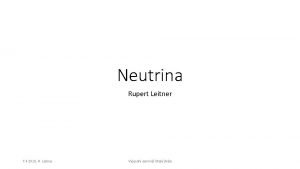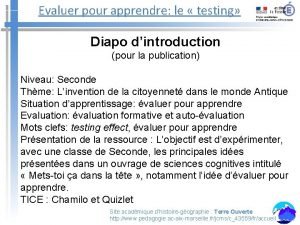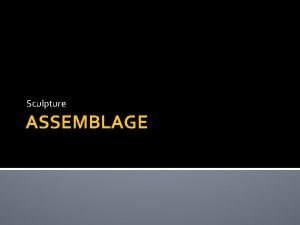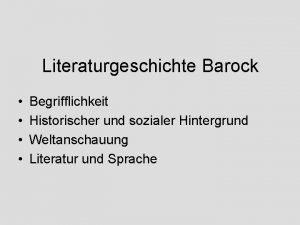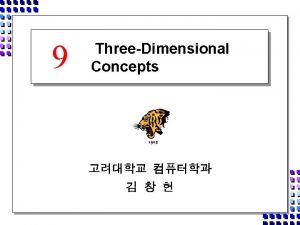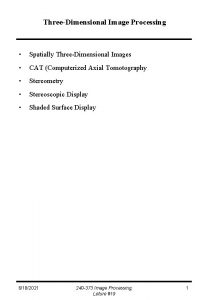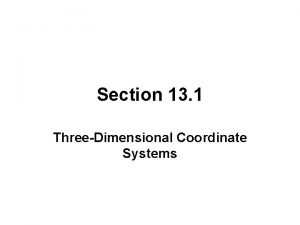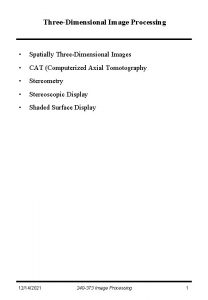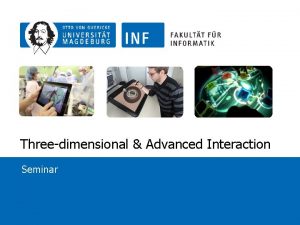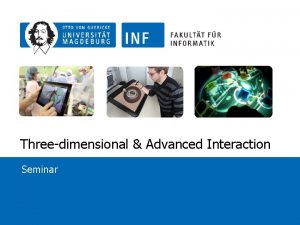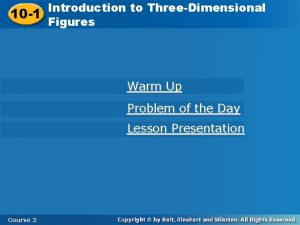Franz Dotter Johann Leitner A threedimensional analysis software











- Slides: 11

Franz Dotter, Johann Leitner A three-dimensional analysis software for languages Budapest 8. 12. 2012

Basic assumptions • (Body and) brain can be modeled as a 3 D-network (containing some specialisations) • As a result of evolution (including socio-cultural evolution), humans perceive and process the environment as "scenes" and "scripts" (structured gestalts) • These "scenes" and "scripts" directly influence(d) the categories of language, e. g. the quality of perception relates to word categories: Quality of perception Main category in language Person/thing/object Noun Action/event Verb Property of a person/thing Adjective Property of an action Adverbs Location/time Adverb(ial phrase)s Evaluation Sentential adverb Relation between entities Conjunction/adposition

Basic assumptions 2 and roles/functions of participants in the scene or other cognitive elements relate to different clauses/constituents, e. g. : role/function Main type of clause Agent/Topic/Theme Subject Action Predicate Patient Object Orientation in space/time Locative/temporal adverbial Evaluation, cause etc. Modal adverbial

Basic structure of the software • • • A cognitive and a language specific level of representation, both conceived as networks (i. e. having "nodes" = elements and "links" = relations) in direct connection (i. e. no intermediate further module or system). The cognitive level is three-dimensional, related to the hypothesis that the brain (not only the visual cortex? ) "constructs" a 3 D-image of reality. The language specific level is two-dimensional, related to the hypothesis that this level can be described from the perspective of the ordering of signs using only two dimensions. The cognitive and the language specific level networks are linked together in order to represent language production/reception/processing. The format of both levels is that of a construction kit which - by differentiation of form, colour and texture - represents cognitive or language categories and subcategories. Two main functions: – – Practical instrument for visualising cognitive linguistic analysis; Search and statistical analysis function concerning any element or combination of elements on both levels.

Descriptional inventory • Language specific level: categories detected by standard linguistic analysis of the codings in different languages • Cognitive level: "(re)constructed" by using "cognitive" interpretations of possible elements or features working "behind" the actual codings

Format of descriptional elements • Entities are nodes, relations are links. • Nodes and links can be differentated by form, colour and texture. • Every "attentional element" is given as an entity. • Cognitive entities are aggregated to units of "higher level" (= hypothesized evolutionary and language-induced developments from early single-element-constructions reflected by language use)

Original requirements • Generalized 3 D editor for modelling scenes • Scenes consist of: – Nodes/elements – Links/relations – Layers • Huge repository of node types (shape, colour, texture, . . . ) • Pattern matching feature: – Build up repository – Look up matching models or sub-models • Proof of concept prototype

The architecture

A sample model (scene)

Pros • XML is here to stay forever • Enough attributes for creating categories and sub-categories • Code is fully in our hands • Requirements are stable • Runs on most machines

And finally. . . the live demo



